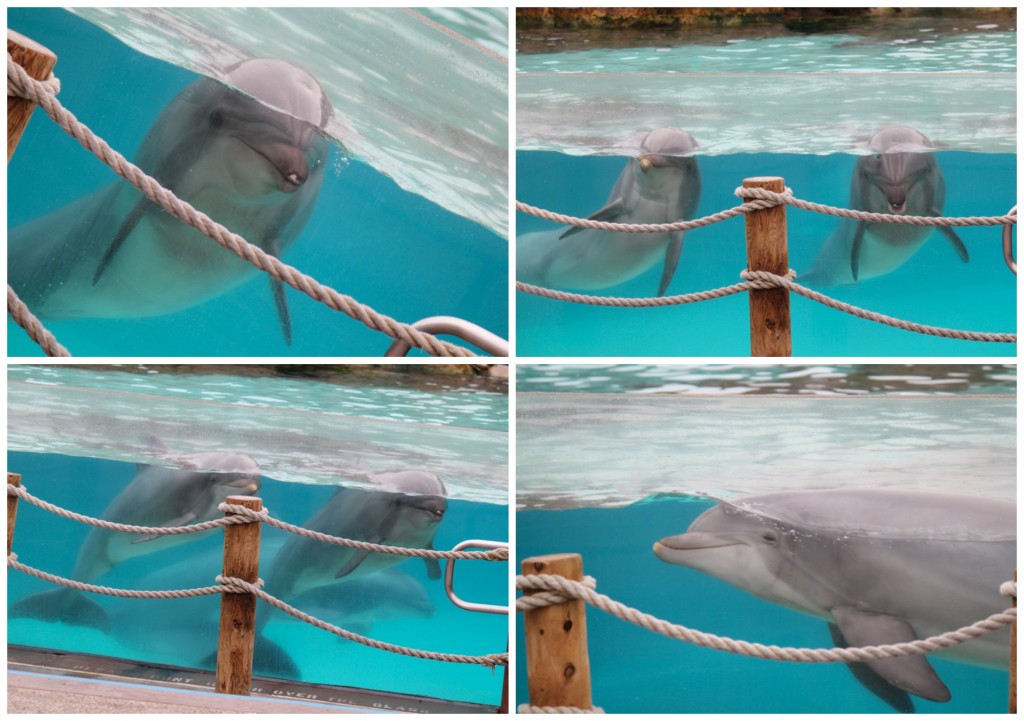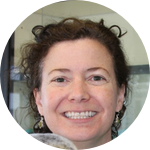About This Project
Humans are one of the most successful species because we learned how to cooperate. Building a house or finding food often requires cooperation. We know that primates, ravens, and humans can spontaneously learn to play a cooperation game to maximize their reward earning $10 together instead of $1 alone. We don't know if marine mammals exhibit this cooperative behavior. This study will explore the decision-making processes and the importance of cooperation in a dolphin's world.
Ask the Scientists
Join The DiscussionWhat is the context of this research?
Dr. Sarah Brosnan has been studying primate responses to equitable and inequitable rewards, which produced this infamous video:
Her group then tested different primates with a cooperation decision-making task - the stag hunt or Assurance game. Her findings suggested that primates responded similarly to humans when the game was standardized across the species, and that differences in primate species was likely related to differences in cognitive abilities or in experiences. When I saw the equity and cooperation studies, I knew marine mammals, like dolphins with their complex thinking and societies, needed to be tested.
What is the significance of this project?
As the controversy surrounding marine mammals in captivity continues to swirl, this project directly addresses questions about animal behavior, scientific knowledge, and education. Scientifically, the project will examine factors influencing cooperation between dolphins and their decision-making abilities while producing directly comparable results to previous research with humans, non-human primates, and ravens. Ethologically, the dolphins will be cognitively and socially stimulated as they learn the rules of a new game spontaneously while coordinating their actions with each other. Educationally, conducting this project at Sea World San Diego allows hundreds of people to directly experience the research process and the active insights and excitement learning brings to all animals.
What are the goals of the project?
To determine if dolphins will work together to learn a new game spontaneously, we will initially pair dolphins that are equal in social status, same sex, and unrelated. Each dolphin will be given some training with the new apparatus to learn what reward occurs when a particular symbol, representing the stag or hare, is selected. Each dolphin will then play the game with a trainer to learn the rules. After learning the basic rules, the dolphins will be given 10-12 trials to play the game with each other. Following the results of this set of tests, we will manipulate different characteristics of the dolphin pairings, including different sexes, ages, status, relatedness, mother-offspring, or and experience (naive with experienced). This project will start late-summer/fall 2016.
Budget
This study is a pilot study for a larger study at other facilities, national and international. The project director is also applying for an internal grant to support this study. This study will be initiated in San Diego where 20+ dolphins live in a facility with underwater viewing. The project director and 2 assistants will visit the facility for 2 week-periods across the study to organize and assist with the research project. Funding from this effort will pay for 6 weeks. The project is expected to take 6-9 months with training and testing. Students from local universities will assist with the project too. The project director will stay with colleagues and the research assistants will have paid lodging. The car rental will allow the researchers transportation to and from the facility. The apparatus materials will consist of PVC piping, acrylic paddles, and an underwater go-pro mounted to the apparatus. A digital video camera & tripod will be set up in the underwater viewing area.
Endorsed by
Meet the Team
Heather M. Hill
I love animals! I read every book about animals in my elementary library before I was 8, and then I read every other animal book available in my hometown's public library. My brother and I collected snails in our backyard, making habitats out of old glass mayonnaise jars, grass, and water and then racing them across our back patio, being sure to put them back once we had our fun. My first visit to SeaWorld San Antonio as a 12-year-old inspired my future direction - to work with marine mammals. 10 years later I was conducting observational and cognitive research with bottlenose dolphins and California sea lions while working on my PhD in Experimental Psychology with a dual emphasis in Comparative Psychology and Developmental Psychology. It has been an absolute pleasure to learn from and engage marine mammals of all types in different types of research from Mississippi to California to Texas. Since having my own children and teaching 100s of others' children, I have learned that dolphin mothers each care for their calves just a little differently, much like humans, and that beluga mothers care for their calves like bottlenose dolphins and killer whales but with a little more flexibility. Beluga calves will ride on top of their mothers like their wild counterparts and will play with just about anything they can manipulate or create games like "beluga of the hill" or "tug-a-war" with each other. From a cognitive perspective, belugas and dolphins look longer at objects and people that are unfamiliar and when they are "surprised" by something that was unexpected, acting much like human infants. My studies have taught me to appreciate not only similarities and differences between species but to also appreciate the importance of individual differences. Ultimately, I wish to take this knowledge gleaned from captive animals and compare it to animals in their natural habitat while also continuing to enrich the lives of the animals that have taught me so many things.
Additional Information
Sea World San Diego has granted access to their dolphin population in the community pool, which has underwater viewing and allows research sessions to be viewed by guests (Image below shows underwater viewing area).
 San Diego {Travel Tuesday}">
San Diego {Travel Tuesday}">
The project director has been working with SeaWorld San Antonio since 2007, conducting independent behavioral and cognitive research with their belugas, bottlenose dolphins, Pacific white-sided dolphins, and killer whales. These efforts have culminated in 9 publications with 3 more pending and over 50 presentations at regional, national, and international conferences with undergraduate and graduate student authors on 94% of the products. https://www.stmarytx.edu/academics/humanities/facu...
Project Backers
- 17Backers
- 25%Funded
- $809Total Donations
- $47.59Average Donation




